Rolex: New GMT-Master II in Stainless Steel, Everose & Everose Rolesor
6 April 2018At Baselworld 2018, Rolex introduce three new versions of the GMT-Master II with a brand new movement, the new-generation calibre 3285. The first new version, in Oystersteel, combines an Oyster case and Jubilee bracelet with a bidirectional rotatable bezel and a 24-hour graduated two-colour Cerachrom insert in red and blue ceramic. Two further versions bring 18ct Everose gold to the GMT-Master II range, along with a two-colour Cerachrom insert in brown and black ceramic.
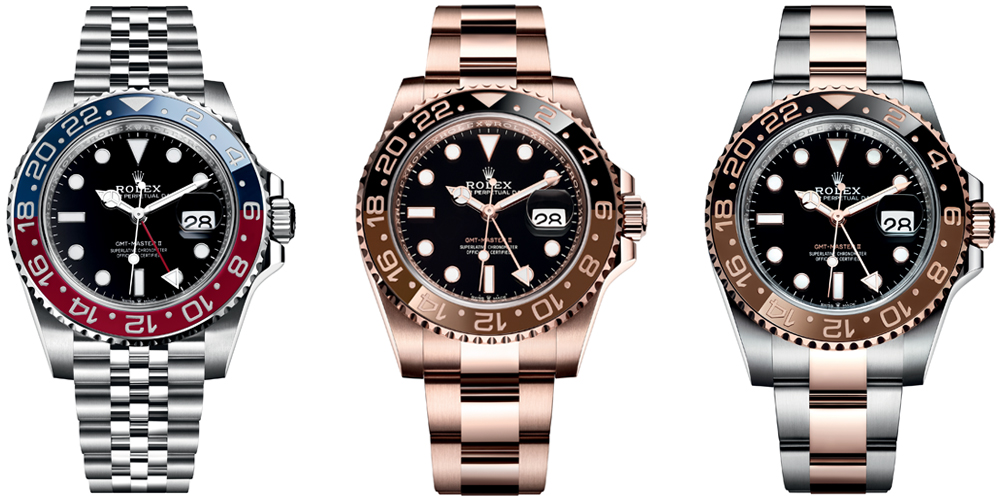
In function as well as in name, the GMT-Master II evokes intercontinental travel across time zones. Greenwich Mean Time (GMT) marks mean solar time at the Royal Observatory in Greenwich, London – the historic location of the official prime meridian used for calculating longitude and determining different time zones around the world.
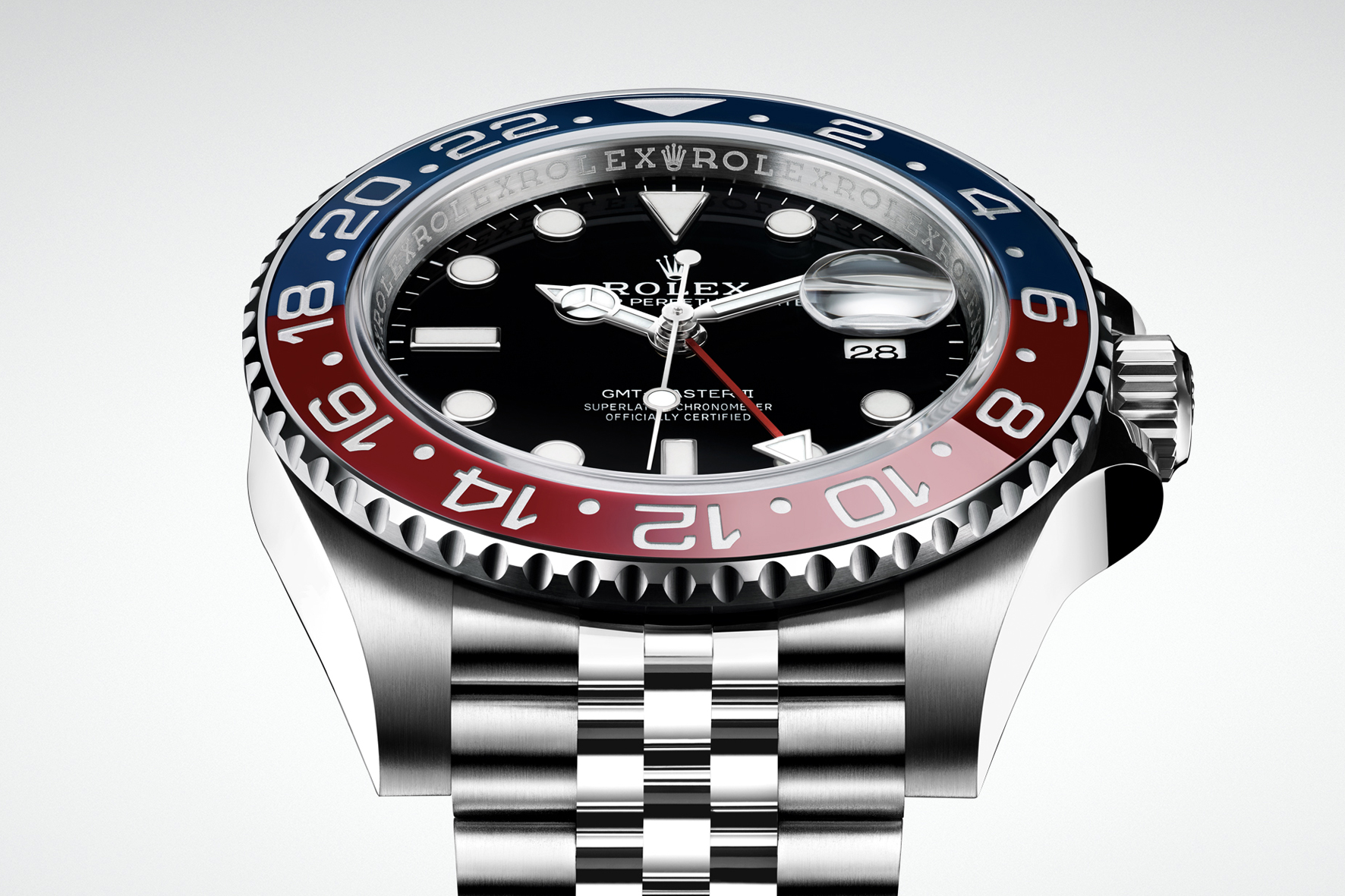
In addition to conventional hour, minute and seconds hands, which display the local time, the GMT-Master II features an arrow-tipped hand which circles the dial once every 24 hours, as well as a bidirectional rotatable bezel and a 24-hour graduated Cerachrom insert in coloured ceramic. When the bezel is in the neutral position, that is with the triangle at 12 o’clock, the 24-hour hand displays the reference time (home time, for example), which can be read using the graduations on the bezel.
When abroad, travellers can set the local time easily, with the hour hand “jumping” from hour to hour thanks to a mechanism operated via the winding crown. The adjustment can be made independently of the minute and seconds hands, and without affecting the 24-hour hand.
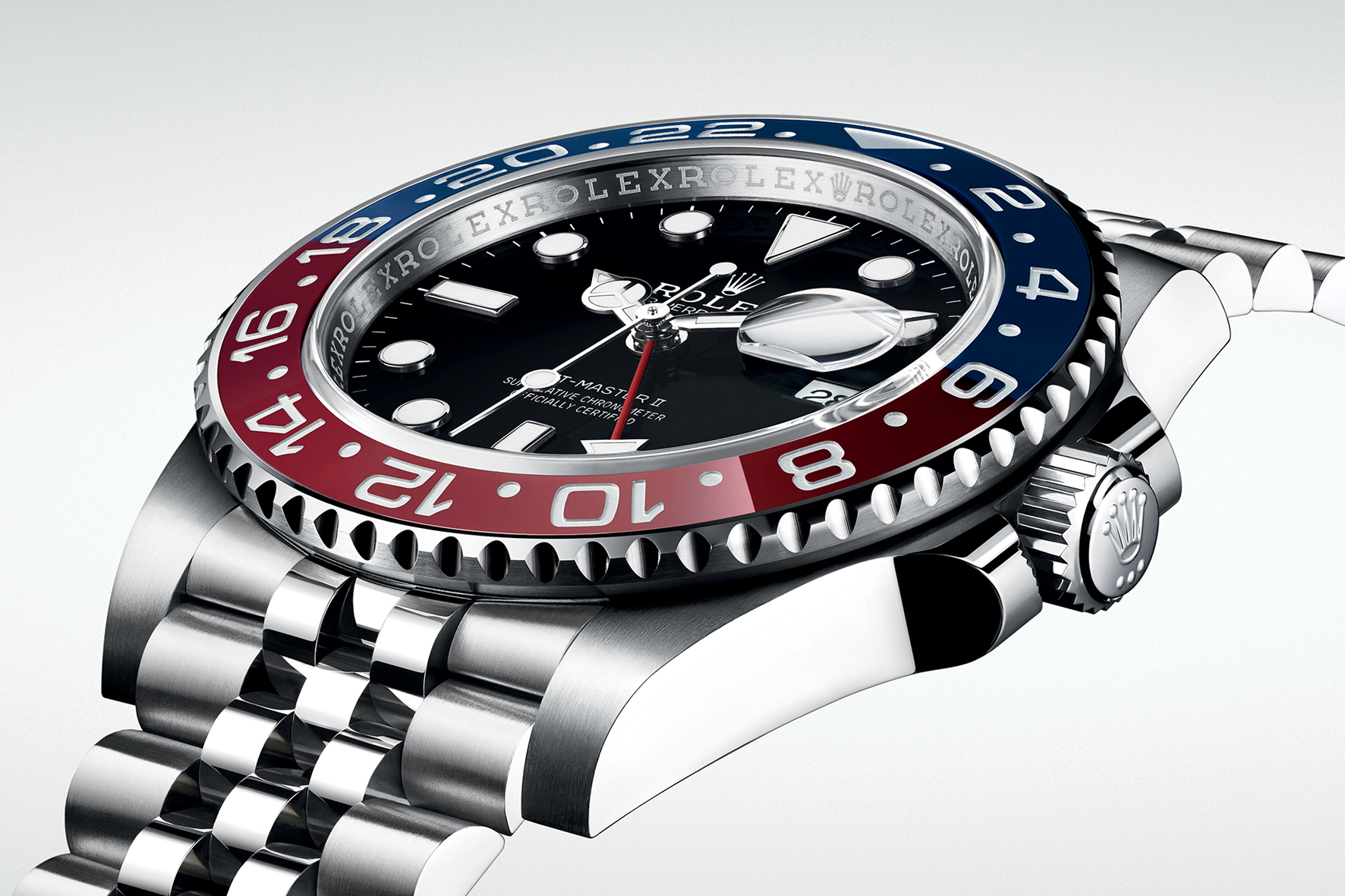
The time in an alternative time zone can be displayed by turning the rotatable bezel. In this case, the reference time is no longer shown, as it is the alternative time zone that is now read via the 24-hour hand against the graduations on the bezel.
The first of the new GMT-Master II versions introduced in 2018 is in Oystersteel. It is fitted onto a five-link Jubilee bracelet, and has a bi-directional rotatable bezel and a 24-hour graduated two-colour Cerachrom insert in red and blue ceramic, calling to mind the colours used on the original GMT-Master in 1955. It is the first time that the Jubilee bracelet, Oystersteel and the two-colour Cerachrom insert in red and blue ceramic have been brought together on the GMT-Master II. (Price €.8.600)
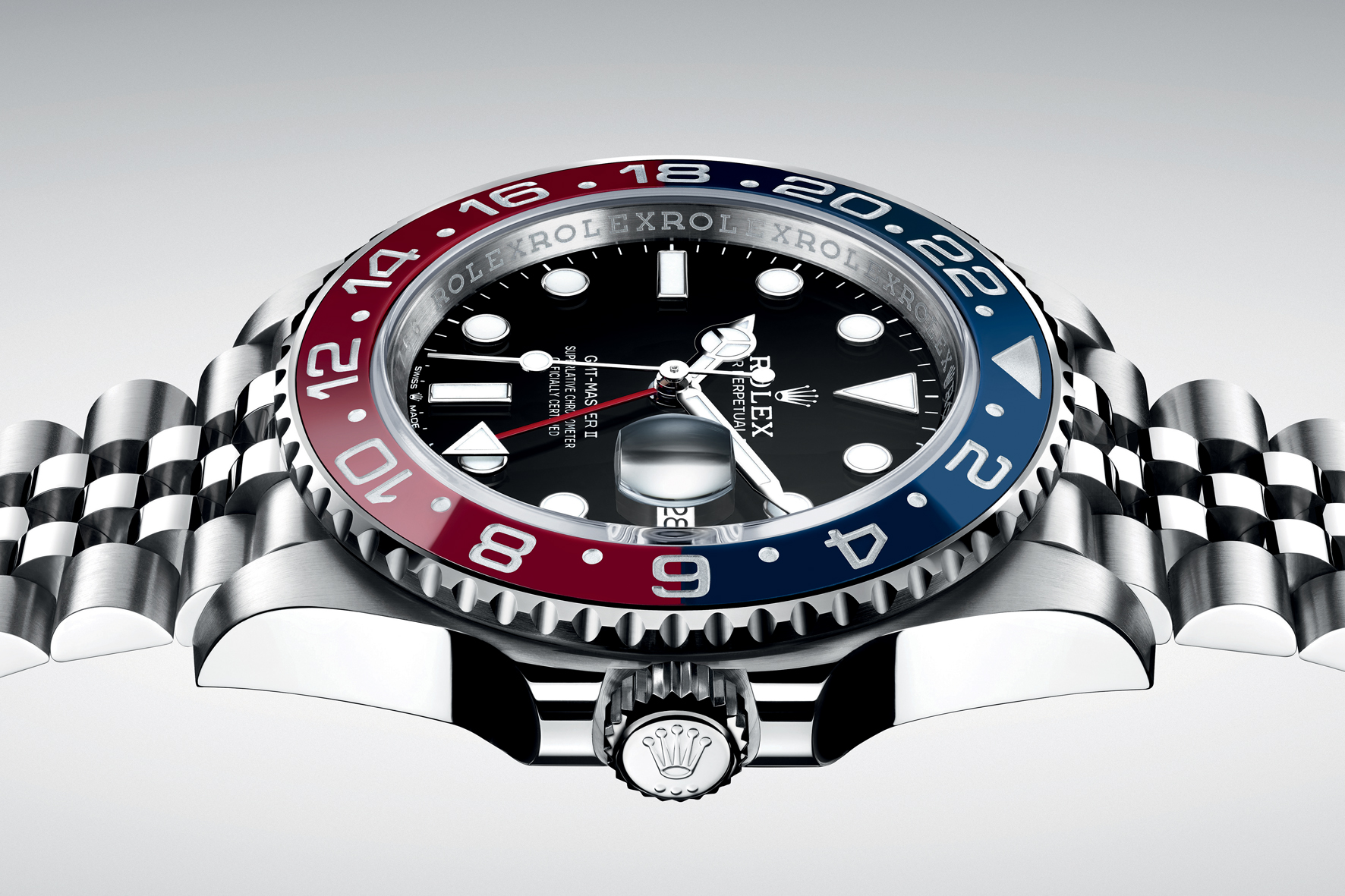
Two further new versions introduce 18ct Everose gold to the GMT-Master II range. One is made entirely from 18ct Everose gold (Price €.34.200), while the other is an Everose Rolesor version – combining Oystersteel and 18ct Everose gold (Price €.13.100). Both watches are equipped with a 24-hour graduated two-colour Cerachrom insert in a black and brown ceramic. On the dial, the GMT-Master II inscription is in powdered rose.
All three new versions have black lacquer dials. The highly legible Chromalight hands and hour markers (long-lasting luminescence, blue glow) are in 18ct white or pink gold. On the Oystersteel version the 24-hour hand is coated with red lacquer.
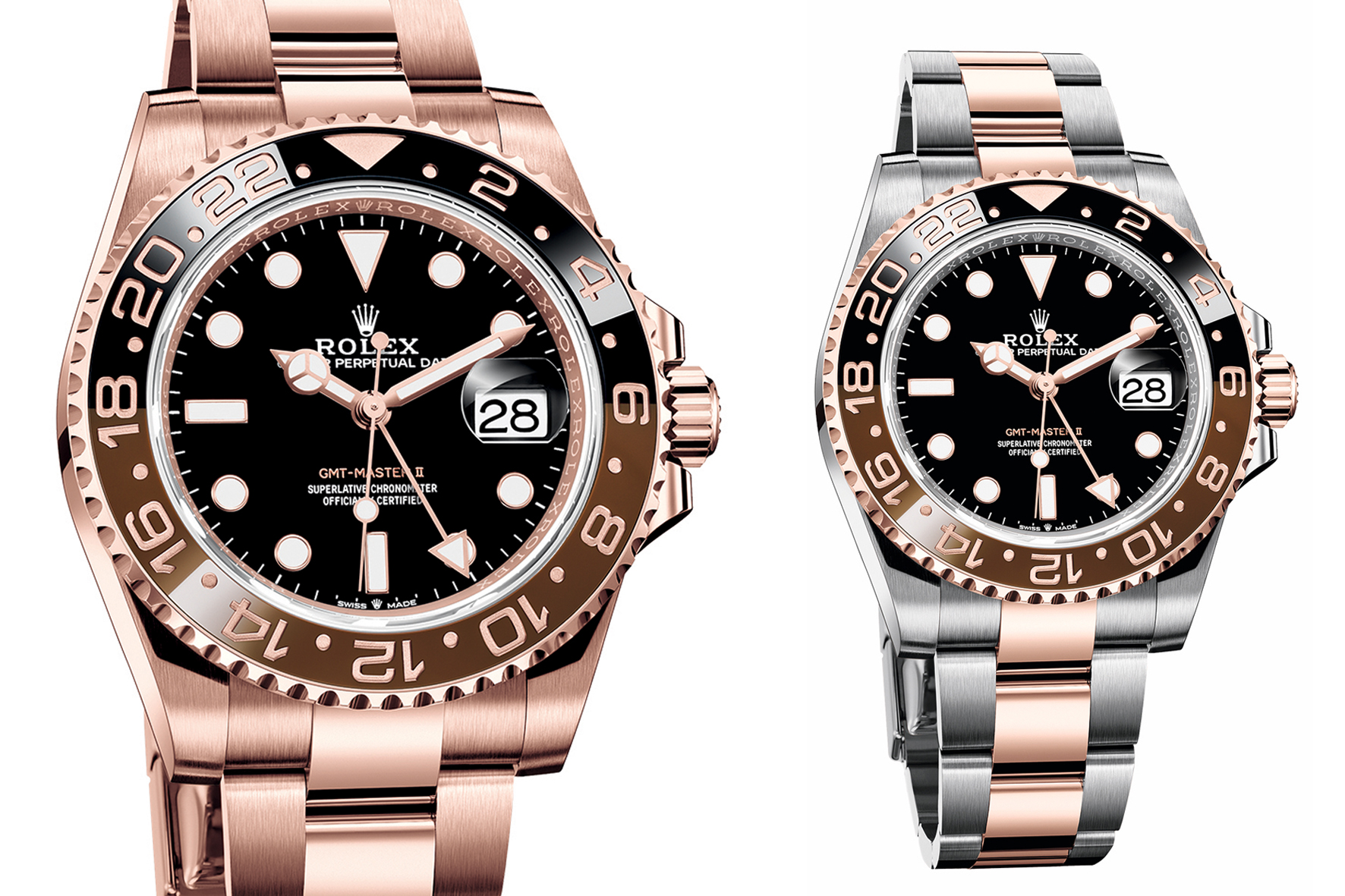
The bracelets on the new GMT-Master II are equipped with the Easylink rapid extension system. This system, patented by Rolex in 1996, allows the wearer to increase the bracelet length by 5mm, providing additional comfort. They are also fitted with an Oysterlock safety clasp, a sophisticated mechanism that prevents accidental opening.
The bracelets also benefit from a concealed attachment system, ensuring seamless visual continuity between the bracelet and case.
